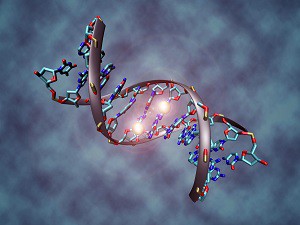
About SMA
SMA is a genetic neuromuscular disease, which means it is inherited and affects nerves responsible for muscle function. Although classified as rare, SMA is the leading genetic cause of death of infants and toddlers, with approximately 95% of the most severely diagnosed cases resulting in death by the age of 18 months. Children with a less severe form of SMA face the prospect of progressive muscle wasting, loss of mobility and motor function.
1 in 40 to 60 people is an SMA carrier, i.e. approximately 1.5 million people in the UK
1 in every 6,000 to 10,000 births is affected by SMA. At any one time, it is thought that there are between 2,000 and 2,500 children and adults in the UK living with SMA.
Progressive wasting (atrophy) of muscles can lead to the following:
- Atrophy in trunk muscles can lead to skeletal deformities (e.g. scoliosis)
- Atrophy in breathing muscles can lead to potentially fatal respiratory problems
- Atrophy in swallowing muscles can lead to difficulties in eating and drinking
There are four types of SMA caused by a faulty gene called SMN1:
TYPE 1
The most common form of SMA and the most severe. Symptoms are usually apparent at birth, or in utero in the most severe cases (Type 0) or during the first few months of life. Weakness is severe and manifests itself in difficulties moving, eating, swallowing and breathing. The proximal muscles, or muscles closest to the trunk such as the neck, shoulder and pelvic girdle muscles, are most significantly involved. SMA Type 1 babies have floppy limbs and tongue fasiculations (flickering). Due to the high risk of serious respiratory problems, most children with this type of SMA rarely survive their second birthday.
TYPE 2
This type is less severe. Onset typically occurs between 7 and 18 months of age. These children are usually able to sit at some point in their lives but not stand or walk unaided. The most significant weaknesses are manifest in their proximal muscles and as they grow, many develop scoliosis, an abnormal curvature of the spine which occurs when the muscles supporting the bones of the spine become weaker. Although Type 2 is a serious condition that may shorten life expectancy, improvements in care standards mean that the majority of people can live long, fulfilling and productive lives.
TYPE 3
Type 3 is the mildest of the three types. Babies appear normal at birth and symptoms generally appear after 18 months of age. Children with Type III range from those able to take a few steps to those who can ambulate throughout their home and community. As some children grow, their larger bodies and heavier weight make walking and other activities more difficult. A child may require a wheelchair to navigate their environment. Life expectancy is normal (Montes et al. 2009) and most people can live long productive lives.